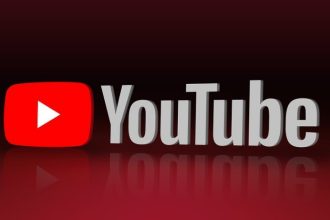Today in this article we will talk about how to order explainer video, having identified the current trend in the market in terms of style and trend.
First, let’s define the concepts of style and trend.
Style is a combination of the artistic expressiveness of a video designer with his creative techniques. The concept, as we mentioned earlier, is not measurable, not specific. But to make it clearer for you when you decide to order a video presentation, we will describe several factors by which you can distinguish one style from another. For example:
- colors of objects, elements / background colors;
- shapes of objects / elements (2D / 2.5D / 3D);
- graphic effects (transitions between scenes, appearance / disappearance of objects);
- level of drawing and detailing of objects;
- dynamics (the speed of “presenting” the visual series to the viewer);
- the presence or absence of “live” photo / video materials;
Now let’s turn our attention to such a term as “trend”. There is also no clear and measurable explanation of this concept. But in the topic of video design, we mean the following by this word: a trend is an indicator of the massive use of a particular style of video. That is, if, for example, in 2014 a video presentation in the style of Whiteboard Animation (drawing by hand on a white sheet) was ordered more often than a video in any other style, then most likely in 2014 this style is in trend.
As a rule, the trend is set by large video studios or individual creative personalities. Not necessarily a trend is something new, just invented. As they say, everything new is well forgotten old. For example, low-poly graphics are now starting to trend. These are objects built from triangles. This technique was invented and used for a long time, but now they are again starting to order videos in this style.
When you want to order a video presentation for your business and talk to the manager or art director of a particular video studio, ask them to offer you several concepts with options for implementing your project in various styles and directions. You don’t have to dwell on one Whiteboard Animation (it feels like these videos are everywhere) – there are other options. After reading this material, you will understand and understand what video styles exist and which ones will be trending in the near future.
Also see: Why you need a video explaining for your startup?
Some of the most famous directions in graphic video design are the following:
- 2D / 3D Animation;
- Kinetic typography (text animation);
- Liqued motion (“liquid” motion);
- Whiteboard Animation (hand drawing on a white sheet);
- Cutouts (cut animation);
- Stop-motion (single-frame shooting);
- Screencast (shooting from a computer screen);
- Talking head (talking head);
There are, of course, more of them, but the ones listed above are some of the most famous and popular. Let’s take a quick look at them.
-
2D / 3 D Animation
A video made in this style is not particularly creative – it is a classic in the world of video design. These videos are great when you need to focus the viewer’s attention on the information that the video conveys.
-
Kinetic typography
This style includes two components: movement and text. As a rule, the text in such a video appears exactly when the voiceover says it, which gives a greater effect of understanding information due to the work of 2 channels of perception (visual and auditory). The text itself can be presented in different formats, sizes and colors. This style is best used to grab the attention of your audience. Even if you start a video without sound, for example, on a video medium in a shopping center, people will still pay attention to it.
-
Liqued motion
Now, the so-called “liquid” movement is wildly popular in the video design market. This style is characterized by the “flow” of one object into another. In the same way, you can show the appearance / disappearance of an object / element or make a “liquid” transition between scenes. Videos made in this style retain attention very well, thereby increasing such an indicator as audience retention, which is beneficial to its promotion on the Internet.
-
Whiteboard Animation
This style, we believe, is familiar to many. The real hand of a person draws with a marker on a white sheet or blackboard (literally). There are even separate video studios that specialize in this particular area. Now this technique is not so popular anymore, but nevertheless many Customers are still interested and order video presentations in the style of “hand drawing”.
-
Cutouts
In modern graphic design, this style (animation technique) is rarely used, especially for “selling purposes”. This is a classic of animation, which, unfortunately, in its original form has become a thing of the past with the advent of modern technology. The technique of crossover animation was used mainly in the creation of cartoons.
Its essence is that characters, objects, backgrounds and other cartoon elements were first drawn by an illustrator, and then cut out of paper, cardboard, fabric, and sometimes photographs, and then animated. Modern designers, of course, don’t use this technique. Clipped images can now be replaced with a scanned version or vector graphics.
-
Stop – motion
Stop motion or, as this technique is often called, plasticine animation. The point of this style is to give the appearance of independent movement to a stationary object. A series of individual frames are created at intervals (steps), and when this series of frames is played back, the illusion of movement is created. For example, this technique can be used to animate a doll with fixed joints.
-
Screencast
Screencasts are typically used in training videos. This technique, rather, can be attributed to “live” shooting, rather than graphic video, but nevertheless, this style is sometimes used in video design. It is very convenient to use it when you need to demonstrate something on your computer screen or show how to use something. The viewer can, in parallel with the viewing, perform actions that the voice from the video “advises” him to.
-
Talking head
“Talking head” is how this presentation style is literally translated. Here we can also include videos in which, in one way or another, there are fragments of a “live” video with a person in the main video. Not necessarily there will be only one head in the frame; it can also take pictures of a person in full growth.
Such videos are distinguished by increased loyalty to them, due to the fact that the viewer, firstly, sees his “interlocutor”, and secondly, he kind of communicates with him (the illusion of live communication). This type of video is very common among people in the info business.
If you are going to order explainer video for your project, use these tips and let you have the most trending video!















